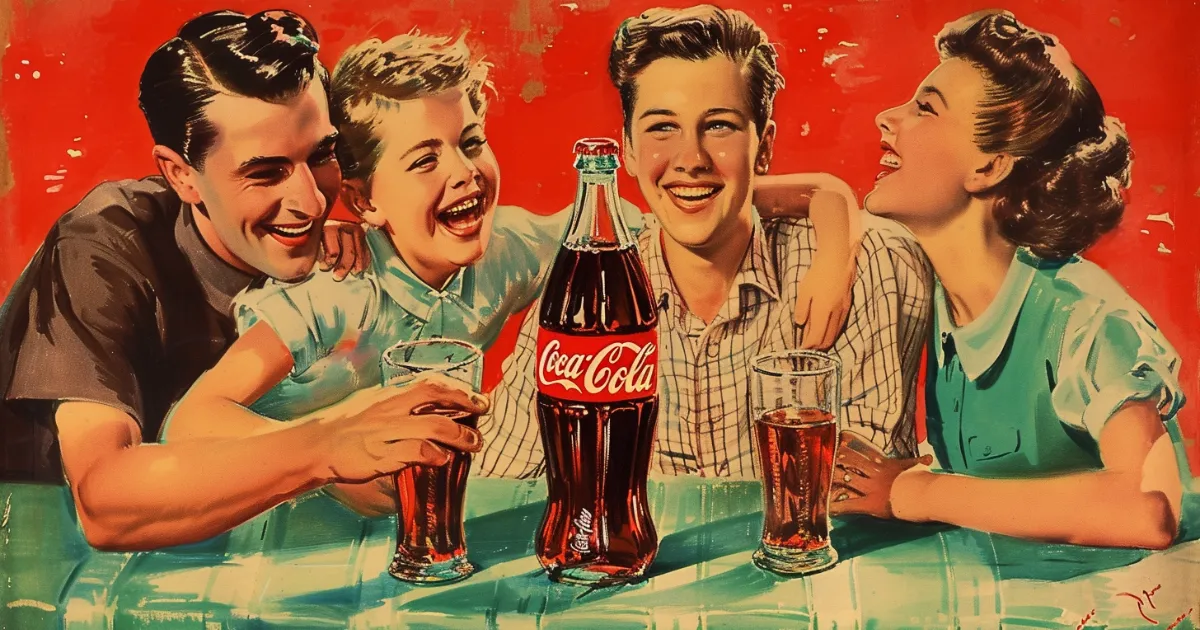Introduction to Coca-Cola’s Advertising History
Coca-Cola is more than just a beverage; it’s a cultural phenomenon. For over a century, this iconic brand has been quenching thirsts and delighting taste buds around the globe. But what truly sets Coca-Cola apart is its masterful approach to advertising. From catchy jingles that tug at your heartstrings to whimsical polar bears stealing the spotlight during holiday seasons, Coca-Cola’s campaigns have left an indelible mark on our collective memory.
As we dive into their advertising history, you’ll see how each campaign not only promoted their product but also tapped into universal emotions and values. The journey from “I’d Like to Buy the World a Coke” to today’s innovative marketing strategies reveals much about consumer connection in branding. Join us as we explore how this beloved soft drink continues to captivate audiences—whether you’re pairing it with samosas or sharing it with friends at gatherings—and why their brand deals remain as impactful today as ever.
The Iconic ‘I’d Like to Buy the World a Coke’ Campaign
The ‘I’d Like to Buy the World a Coke’ campaign is one of Coca-Cola’s most memorable milestones. Launched in 1971, it aimed to promote unity and peace during a time of social upheaval.
The ad featured diverse people from around the globe singing together on a hillside. This image captured a universal longing for harmony. The message was simple yet powerful: sharing a Coke can bring the world closer.
Its catchy jingle became an anthem, resonating with audiences far beyond its original intent. Even decades later, people still recall that uplifting tune and vibrant imagery.
Coca-Cola cleverly tied their product to emotional connections instead of just thirst. Through this approach, they established themselves not only as a beverage brand but as an emblem of friendship and community spirit.
Evolution of Coca-Cola’s Advertising Strategies
Coca-Cola’s advertising strategies have undergone a remarkable transformation since its inception. Initially, the brand focused on simple print ads that highlighted refreshing moments. As time progressed, television commercials brought their narratives to life.
The introduction of jingles and catchy slogans created an emotional connection with consumers. Ads began to celebrate shared experiences, tapping into happiness and togetherness. This shift marked a turning point in how brands could influence culture.
In recent years, Coca-Cola has embraced digital platforms extensively. Social media campaigns engage younger audiences directly, allowing for real-time interactions. Collaborations with influencers and strategic brand deals further amplify their reach.
Moreover, sustainability messaging has found its way into advertisements, resonating deeply with eco-conscious consumers. The focus now extends beyond just selling a drink; it’s about promoting values and lifestyle choices that align with modern sensibilities.
Impact of Polar Bears in Coca-Cola’s Ads
Coca-Cola has a knack for creating memorable characters, and the polar bear is one of its most beloved. First introduced in the 1990s, these animated bears quickly captured hearts with their playful antics.
The snowy backdrop perfectly complements Coca-Cola’s signature red branding. The ads evoke feelings of warmth and joy amid winter’s chill. This contrast speaks volumes about sharing moments with loved ones over a Coke.
These charming creatures symbolize not just fun but also a deeper connection to nature. They remind consumers that enjoying a soda can be part of magical experiences.
Moreover, the polar bears have become icons in their own right. Their presence has contributed significantly to brand identity, making them synonymous with Coca-Cola during the holiday season and beyond. Such marketing strategies highlight how effective storytelling can elevate brand perception while fostering emotional connections.
Controversies Surrounding Coca-Cola’s Advertising
Coca-Cola’s advertising journey has not been without its share of controversies. Over the years, various campaigns have sparked debates and criticism.
One notable instance was the backlash against their “Share a Coke” campaign. Some argued that it promoted consumerism while ignoring social issues like obesity and health concerns linked to sugary beverages.
Moreover, Coca-Cola faced scrutiny for environmental claims in their ads. Critics pointed out discrepancies between marketing messages and actual sustainability practices. This created doubt among environmentally-conscious consumers.
The brand also encountered accusations of cultural appropriation in some ad visuals. Missteps regarding representation led to discussions about inclusivity and sensitivity in advertising.
Such controversies highlight the fine line brands walk when tapping into emotions or societal themes. For a giant like Coca-Cola, navigating these challenges is crucial for maintaining public trust amidst evolving consumer expectations.
Analysis of the Success and Effectiveness of Coca-Cola’s Ads
Coca-Cola’s advertising has consistently struck a chord with audiences. The brand understands the emotional connections people have with their products. This emotional appeal is crucial in creating memorable campaigns.
Take the ‘I’d Like to Buy the World a Coke’ campaign, for example. It wasn’t just about selling soda; it was about unity and harmony. This message resonated globally, showcasing Coca-Cola as more than just a beverage.
The use of vivid imagery also plays a pivotal role in their success. Bright colors and engaging visuals capture attention instantly. Iconic symbols like Santa Claus or polar bears are embedded in collective memory, often evoking nostalgia.
Furthermore, targeted marketing enhances effectiveness. By aligning ads with local cultures and trends, Coca-Cola maintains relevance across diverse markets. Their collaborations and brand deals amplify this strategy even further, ensuring they reach varied demographics effectively while keeping engagement high.
How Coca-Cola Continues to Stay Relevant in Advertising
Coca-Cola’s ability to stay relevant in the ever-changing advertising landscape is nothing short of remarkable. The brand continually reinvents itself while staying true to its core values. By tapping into current social issues and trends, Coca-Cola effectively connects with diverse audiences worldwide.
One key strategy has been embracing digital platforms. Social media campaigns have allowed Coca-Cola to engage directly with consumers, fostering a sense of community around the brand. Campaigns like “Share a Coke” encouraged personalization by featuring names on bottles, creating buzz among fans eager to find their own name or that of friends and family.
Coca-Cola also excels at collaborating with pop culture icons and influencers. These brand deals not only enhance visibility but also keep the beverage at the forefront of consumer consciousness. When paired with popular snacks like samosas, Coca-Cola becomes part of cherished moments for many people, further solidifying its place in everyday life.
Moreover, seasonal promotions continue to be a hallmark of Coca-Cola’s strategy. Whether it’s festive-themed ads during Christmas or summer campaigns highlighting refreshment during hot days, they successfully evoke emotions tied to specific experiences and memories.
By blending nostalgia with modernity, Coca-Cola maintains an emotional connection that resonates deeply across generations. This unique approach ensures that even as new competitors emerge in the market, Coca-Cola continues to capture hearts—and taste buds—around the globe.




